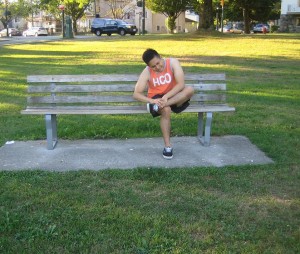Toenail discomfort is considered as a common issue among runners. It is important to note that the foot is subjected to substantial stress and must support the full weight of the body on a limited surface area. Along with the pounding of the feet during running, this is why they are susceptible to injuries. Many usually complain of toenail discomfort after a long-distance run and the pain can occur due to the excess pooling of blood beneath the toenail or from an ingrown toenail. If you want to be prepared to deal with the discomfort, click here.
Ingrown toenails
An ingrown toenail occurs once the edges of the toenail turn downwards and grow into the soft tissue that surrounds the toe. This can result to infection since the area where the toenail is growing into the toe is considered as an open wound and bacteria can enter.
Ingrown toenails can be the result of not properly trimming the toenails. It is important to avoid trimming the nails too short since there is a tendency that they will grow into the toe since there are no distinct borders. Wearing shoes that are too small can also cause the toenail to be pressed downward into the toe and this can affect the direction in which the nail grows. Remember that running and placing a lot of pressure on the toes and feet can cause the toenails to grow into the toe.

Black toenails
When it comes to black toenails, they occur when running in shoes that are too small or due to the increased flow of blood under the toenail. If the socks or shoes used by the individual are too tight, the constant rubbing while running will produce friction which results to a bruise beneath the toenail.
Black toenails can be instigated by pressure of blood forced into the toes while running. With every stride, the foot comes forward and the blood flows forward in the foot and accumulates into the toe. Take note that this will lead to the accumulation of blood beneath the toenail. In addition, warm weather can also increase the risk for black toenails while running since the feet has the tendency to swell when subjected to heat.
Treatment
You can provide padding for the toes or simply place small amounts of cotton beneath the toenail where it is growing into the nailbed. These are effective in helping ingrown toenails. It is also recommended to change shoes and rest the affected foot to prevent the ingrown toenail from worsening.
When managing a black toenail, elevation and rest can help minimize the flow of blood to the affected area. Depending on the preference of the individual, he/she can apply an ice pack to help minimize the blood flow and reduce the swelling.
Preventive measures
It is best to change worn out running shoes and opt for a pair that has enough room for the toes prior to running again. You can utilize padding or bandages around the affected toe before a run to help minimize the friction.
The best way to prevent an ingrown toenail is to keep the toenails short enough so that they will not rub against the socks or shoes while running. Just make sure that they are long enough that there is no risk for the edge for the nail to grow into the flesh of the surrounding toe. Additionally, you have to trim them in a square shape so that there is a defined border to the nail.
